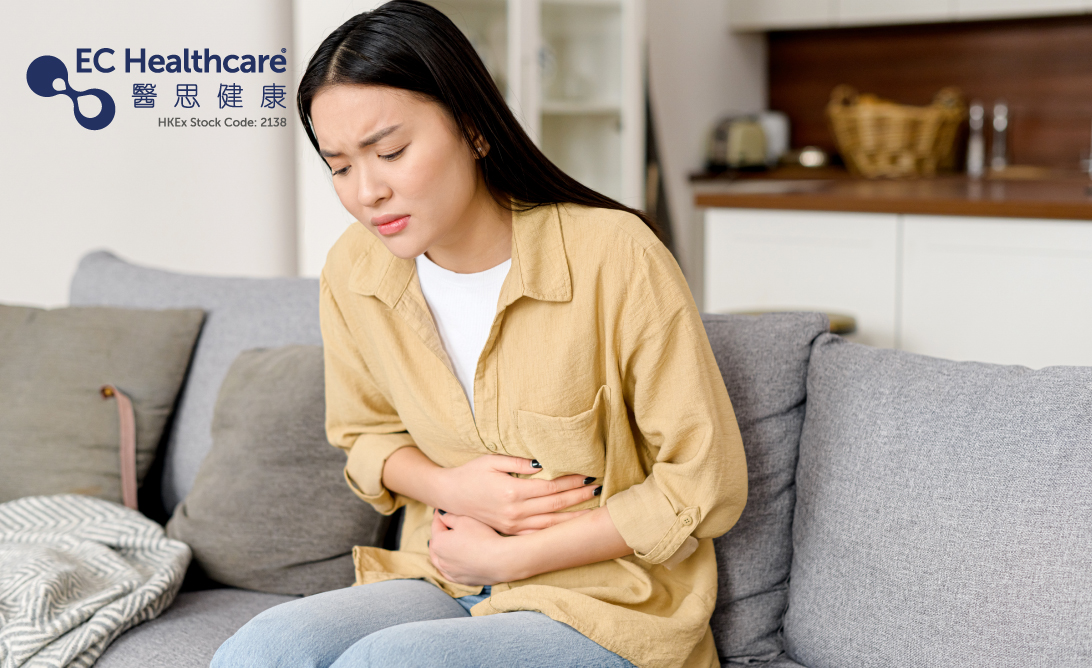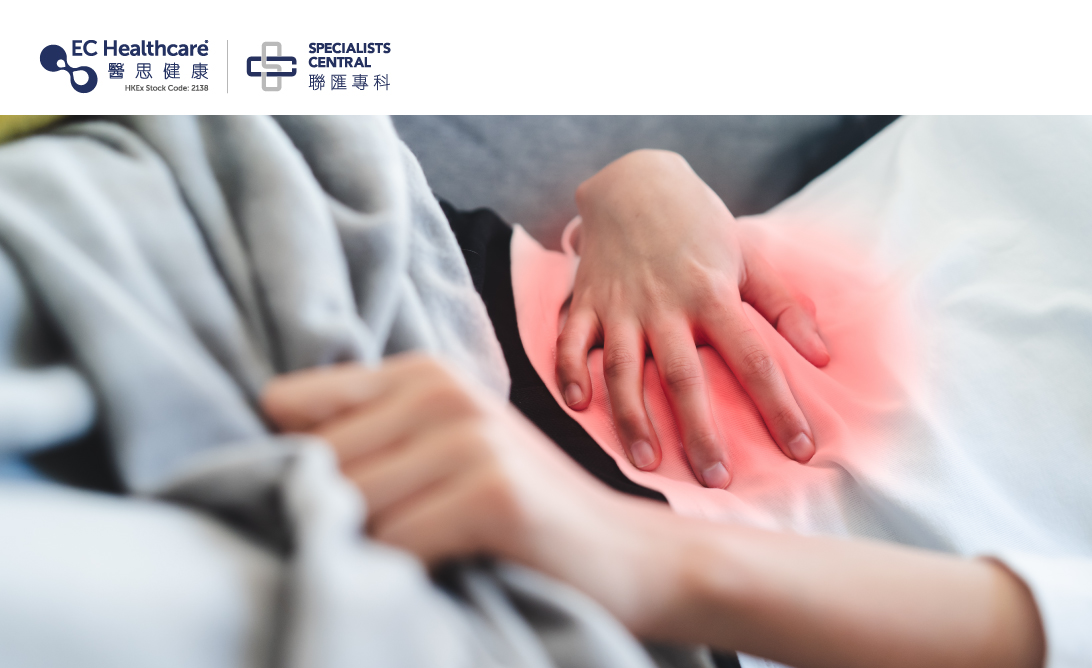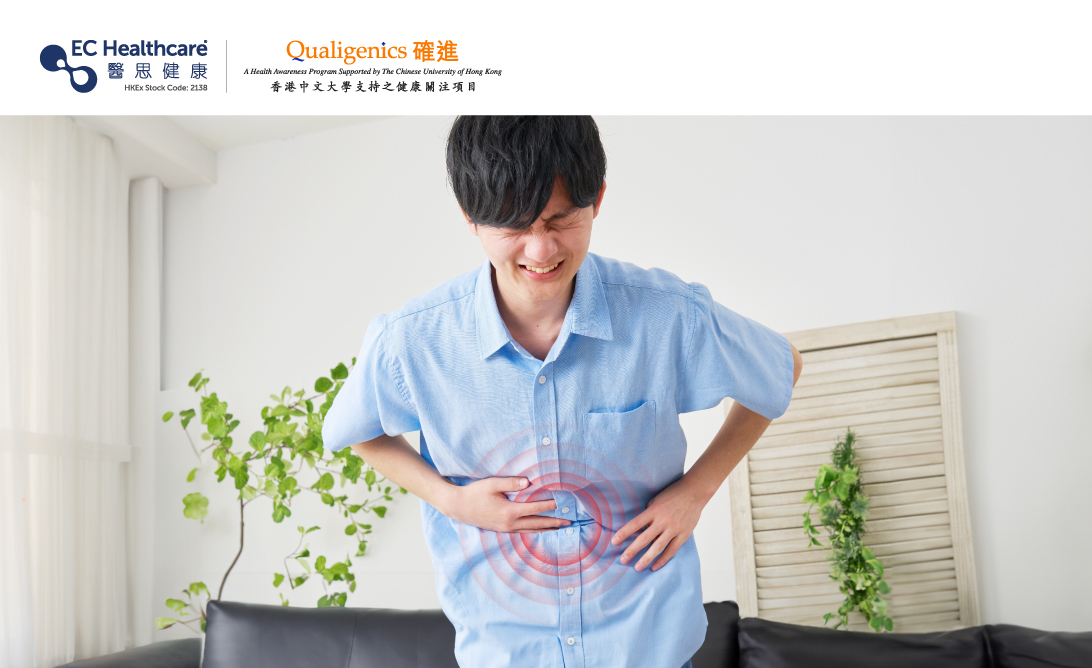Do NOT Underestimate Abdominal Pain After Every Feast – It Could Be Cholecystitis!


Are you suffering from pain in the right upper abdomen after every meal? Do not overlook this dull pain, since indigestion or food poisoning may not be its only cause – it could be a symptom of cholecystitis! Chronic cholecystitis may even transform into gallbladder cancer, which must be terrifying for everyone.
Cholecystitis is inflammation of the gallbladder usually caused by gallstones. The gallbladder lies below our liver and is responsible for storing the bile produced by the liver. The bile aids in digestion via fat emulsification. Therefore, cholecystitis symptoms often occur after a big meal or excessive consumption of high-fat foods which need more bile to break down the fat. If the cystic duct is obstructed, bile cannot flow smoothly and build up in the gallbladder, which leads to swelling and increased pressure inside it, hence inflammation. Cholecystitis can be categorised into acute and chronic cholecystitis.
Causes of acute cholecystitis and chronic cholecystitis
Acute cholecystitis can be divided into calculous cholecystitis and acalculous cholecystitis. The former is more common and is caused by the blockage of gallstones in the cystic duct; the latter is less common and is often caused by prolonged anaesthesia and fasting in surgery or sepsis. The most common cholecystitis is chronic cholecystitis, which means the chronic inflammation of the gallbladder. Its causes include pathogen infection, biliary obstruction in the joint of the bile duct and pancreatic duct, gallstones, etc. If the gallstone keeps rubbing the lining of the gallbladder chronically, this will bring irreversible damage to the gallbladder, which may trigger the transformation from chronic cholecystitis to gallbladder cancer.
Symptoms and examinations of cholecystitis
In developed countries, around 10% to 15% of the population have gallstones, but most of them may not develop symptoms throughout their life. Yet, if the gallstone grows to a large size or falls to the cystic duct, bile will be trapped inside the gallbladder, triggering biliary colic. Acute cholecystitis is usually characterised by sudden pain starting from the right upper abdomen that extends to the back or right shoulder blade. Although the pain will not worsen with walking, it cannot be relieved even with changes in posture or going to the toilet. The pain will reach its peak one hour after its onset. If the gallstone is passed to the intestines or back to the gallbladder and does not block the cystic duct anymore, the symptom will be alleviated. However, the pain in the upper or the right upper abdomen may persist for 6 hours or more, while some patients may even suffer from fever, nausea, vomiting, etc.
During the onset of acute cholecystitis symptoms, patients are most likely to suffer from sharp pain that requires medical attention or even A&E care immediately. Yet, people with dull pain in the right upper abdomen may underestimate this underlying condition. If you experience the above symptoms, you are advised to seek medical help and diagnosis with a full abdominal ultrasound scan.
A bland diet helps prevent cholecystitis
To prevent cholecystitis, you should drink more water, and maintain a bland diet which includes a low consumption of fried, high-fat, high-cholesterol, and high-sugar foods, as well as a high intake of high-fibre fruits and vegetables. Your lifestyle and habits also matter. You should eat meals of a regular amount at regular intervals to maintain a healthy weight. Never binge eat or drink as it gives you a higher risk of cholecystitis. Getting enough sleep and exercising moderately also help. People engaging in weight control behaviours should avoid rapid weight loss or prolonged fasting since these behaviours can trigger the formation of gallstones, posing a threat to their health.






